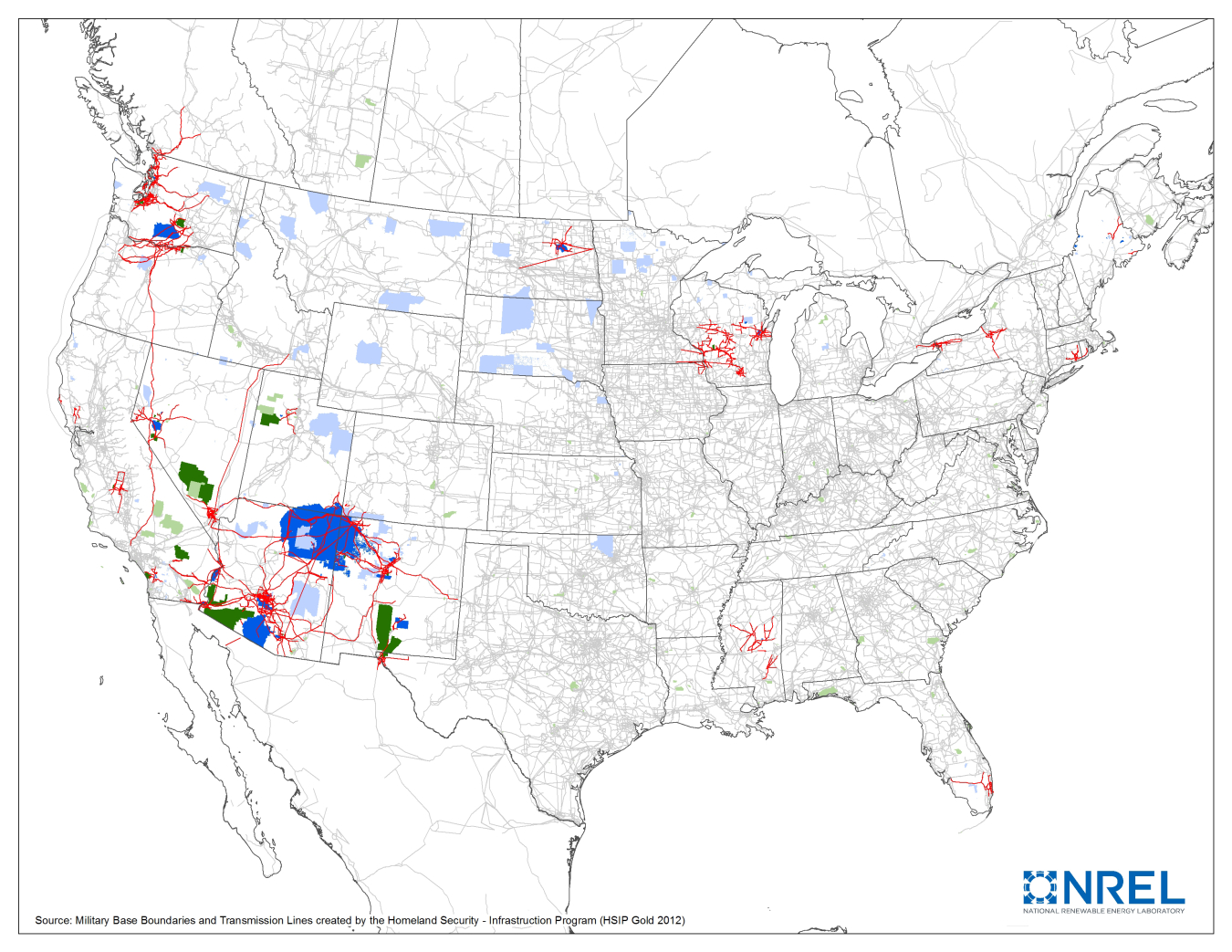The DOE Office of Indian Energy has released a comprehensive new training curriculum and five new publications that offer in-depth guidance on tribal renewable energy development opportunities as well as project planning and financing.
Office of Indian Energy Policy and Programs
June 7, 2013
This map from a newly published DOE Office of Indian Energy white paper shows transmission lines highlighted in red, military bases in green, and tribal lands in purple. Of the Tribes identified in the paper as being in close proximity to military bases, 54% are located in the West, 18% in the Pacific Northwest, and 12% in New England and New York.
A primary focus of the DOE Office of Indian Energy is to provide Tribes with reliable, accurate, timely information that empowers them to put their energy visions into action. In support of this mission, the Office has released a comprehensive tribal renewable energy development course curriculum and five new publications that provide in-depth guidance on renewable energy development opportunities as well as project planning and financing.
Tribal Energy Development Courses
The DOE Office of Indian Energy’s educational training program is designed to provide tribal leaders and professionals with an overview of renewable energy technologies, as well as advanced information on how to develop and finance a tribal renewable energy project. The foundational and advanced series of courses are available on demand.
Commercial-Scale Renewable Energy Project Development and Finance Workshop
In addition, the DOE Office of Indian Energy is hosting intensive workshops on the advanced topics, the first of which will be held July 9–11 at DOE’s National Renewable Energy Laboratory in Golden, Colorado. The July training, which will focus on commercial-scale renewable energy project development and finance, is specifically designed for elected tribal leaders and tribal executives, accountants, and attorneys interested in gaining the knowledge and confidence needed to forge ahead with developing a commercial-scale renewable energy project.
New Tribal Energy Publications
Download the following new publications on tribal renewable energy development:
- Geospatial Analysis of Renewable Energy Technical Potential on Tribal Lands—This report estimates the technical generation potential of the various renewable energy resources that exist on tribal lands to assist Tribes in prioritizing new projects.
- Developing Clean Energy Projects on Tribal Lands: Data and Resources for Tribes—This booklet is a companion piece to the above report highlighting renewable energy technical potential by technology and available resources in an accessible format that presents key figures at a glance.
- Military Base Off-taker Opportunities for Tribal Renewable Energy Projects—This white paper surveys DOD installations that could have an interest purchasing renewable energy from Tribes, identifies 53 Indian reservations that are within 10 miles of military bases, and highlights 15 reservations with the greatest potential for tribal renewable energy installations.
- Developing Tribal Energy Projects: Community Energy Planning—This case study outlines the strategic energy planning process the DOE Office of Indian Energy uses to assist Tribes in putting their energy visions into action. It includes anecdotes from tribal leaders highlighting how their communities benefitted from the process, which can be applied by any Tribe.
- Financing Opportunities for Renewable Energy Development in Alaska—This technical report provides an overview of existing and potential financing structures for renewable energy project development in Alaska.
For more information, access the full curriculum of basic and advanced courses on the DOE Office of Indian Energy Education and Training page. Download the new publications under New Resources on the DOE Office of Indian Energy website home page.

